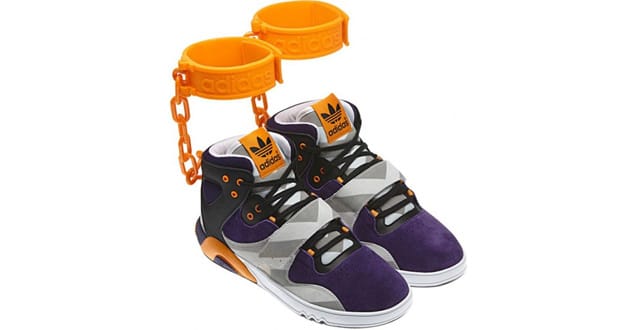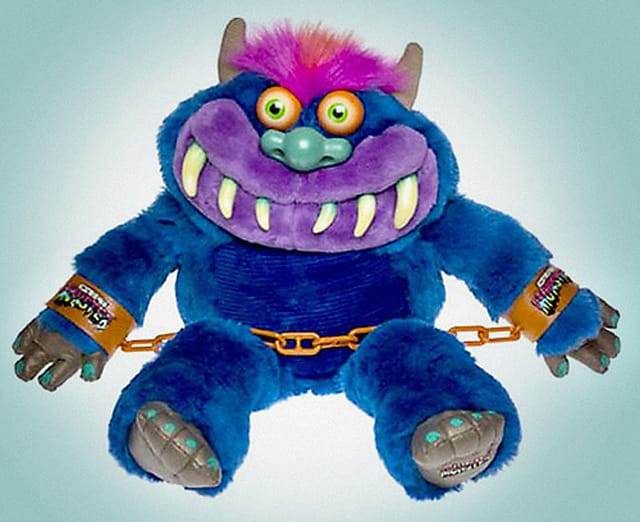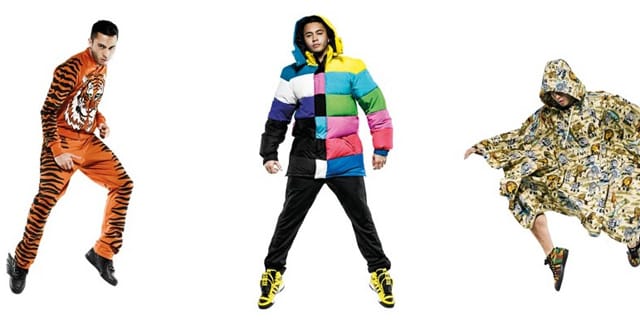Free at Last from Adidas' Shackle Shoes
Earlier this year on their Facebook page, Adidas offered a sneak-peak of their newest shoe, the $350 JS Roundhouse Mid, designed by Jeremy Scott. The shoes were nothing special except for one design element I had never seen on a shoe before, shackles.

Earlier this year on their Facebook page, Adidas offered a sneak-peak of their newest shoe, the $350 JS Roundhouse Mid, designed by Jeremy Scott. The shoes were nothing special except for one design element I had never seen on a shoe before, shackles. Scott claims the bright orange shackles were inspired not by slavery but by My Pet Monster, a fuzzy children’s toy whose hands were chained. (pictured below) The shoe sparked public anger and on on June 18 Adidas announced that they would halt planned production of the shoes.

The resemblance to the toy is obvious, and I want to believe Scott because mass produced slavery-inspired shoes is such a bad idea that I have trouble believing he would have intentionally tried. That said, I don’t know how Scott or Adidas could miss the glaring reference. Scott has made a name for himself out of celebrity praise from the likes of Lady Gaga, Britney Spears, Rihanna, Kanye West and many more. Because of his success and flashy pop-inspired clothing he has come to be known as the fashion world’s Jeff Koons.

The reference to Koons is understandable, but these shoes and the subsequent reaction illustrates the huge divide between the art world and design/fashion world. Yes, when I saw these shoes I thought they shouldn’t be manufactured, yet I know that if they were an artwork in a gallery context, I would have been bored by them. I recall Abdi Farah work in his solo show at the Brooklyn Museum for winning the Work of Art reality TV series. His piece, “Libation” featured a cast of an African-American man wearing high tops and shorts. The piece was meant to cause reflection about continued racism and oppression. The piece was familiar, and by no means controversial. The setting is key, museums demand reflection about an idea or image rather than active participation and consumption in that idea.
I remember being upset by Abercrombie and Fitch’s racist Asian t-shirts, but I have always been intrigued by highly controversial works like “Piss Christ” by Andres Serrano or Robert Mapplethorpe’s self portrait with a bullwhip in his ass. Urban Outfitters and Marc Jacobs appropriating graffiti into their own products, here and here upset me, but issues of appropriation have become the everyday in the art world after Richard Prince and other appropriation artists became accepted.
These works create a serious dialogue about controversial issues that should not shied away from, but the shoes were accidentally partaking in an intense conversation about race and class, and putting that conversation in a shoe store or a court would be wrought with problems. At what point and under what circumstances is an artist’s intention acceptable? What are the differences between a museum and retail store? If a museum stops showing a work because it is controversial it is censorship, but if a store does the same is it merely good business?




